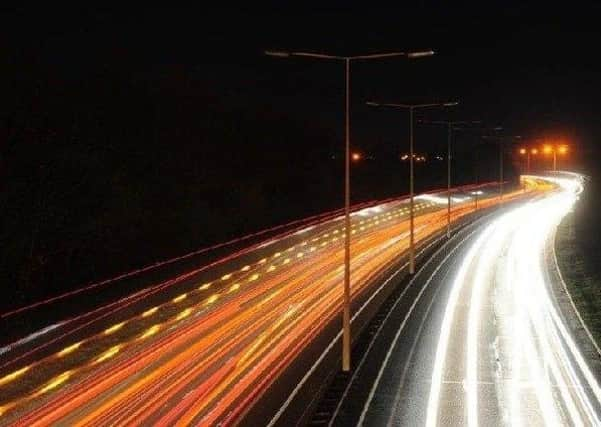Peterborough City Council cuts street light spending by more than £1 million in five years


Councils across England have faced huge financial challenges in the wake of years of central funding cuts, with many forced to review their budgets for local services – including street lights – to save money.
Some have made large savings on carbon emissions and energy bills by switching to LED lights, or by operating partial night-time switch-off regimes for lamps in their area.
Advertisement
Hide AdAdvertisement
Hide AdBut the killing of Sarah Everard, who disappeared while walking home from a friend’s house in London earlier this month, has prompted a wave of concern about women’s safety on the streets.
Proposals to dim Peterborough’s street lights to reduce carbon emissions will go ahead despite concerns highlighted in the wake of Sarah Everard’s death.
The Government said it is taking a series of “immediate steps” to improve security, including a doubling of the Safer Streets fund – which provides neighbourhood measures such as better lighting and CCTV – to £45 million.
Ministry of Housing, Communities and Local Government data shows Peterborough City Council spent around £1.2 million on street lights in the area in 2019-20.
Advertisement
Hide AdAdvertisement
Hide AdThat was down from 2014-15, when the council spent around £2.3 million, after the figure was adjusted for inflation – a real-terms cut of 47 per cent over five years.
Across England, street light spending fell by 15 per cent in real terms over the same period.
Last year, the city council finished upgrading 17,000 street lights to energy-efficient LEDs.
It then agreed to dim street lights in residential areas by 20 per cent between 9.30pm and 5am, by 20 per cent on traffic routes between 9pm and midnight, and by 40 per cent between midnight and 5am.
Advertisement
Hide AdAdvertisement
Hide AdDuring the coronavirus pandemic it then rushed through a decision to dim lights in residential areas and on traffic routes by 40 per cent from “switch on to switch of” over a limited period due to the sharp reduction in traffic.
A council spokesman said: “As well as reducing carbon emissions, LED lights offer flexibility of use. The street lights can be remotely controlled by area. Therefore, if a specific area, such as a remote footpath or cycleway, was of concern, highways would work with the enforcement and prevention team to see how a change of lighting could assist.
“Additionally, money from the Towns Fund bid is being spent on a number of projects which will create, upgrade and enhance our footpaths across the city centre, making it easier and safer for all residents to travel around on foot and by bike.”
The authority did believe it would impact on safety.
Nesil Caliskan, chairman of the safer and stronger communities board at the Local Government Association, which represents councils, said: “Community safety is a top priority for local authorities.
Advertisement
Hide AdAdvertisement
Hide Ad“Despite significant funding pressures in recent years, councils continue to spend and invest heavily on streetlighting, including in upgraded, environmentally friendly lighting which costs less to run.
“We are pleased at the extension of the Safer Streets Fund, but its primary aim is to tackle persistent street crime and burglary, so while helpful to see increased funding for crime prevention measures, there needs to be a renewed focus on measures that will effectively tackle violence against women and girls.”
She added that there needs to be a “wider societal cultural shift” towards preventing abusive and violent behaviour.
“Women and girls should be safe walking home alone on any street in the country, at any time of day,” she said.
Advertisement
Hide AdAdvertisement
Hide AdIn parts of the country, calls have been made for street lights to be switched back on at night over safety fears.
Petitions launched in Lincolnshire and Warwickshire have each attracted thousands of signatures, while Essex County Council is reportedly reviewing a 2014 decision to switch off 70 per cent of lamps in the area.
Prime Minister Boris Johnson said the Government is committed to doing “everything we can” to make the streets safe for women following Ms Everard’s death.